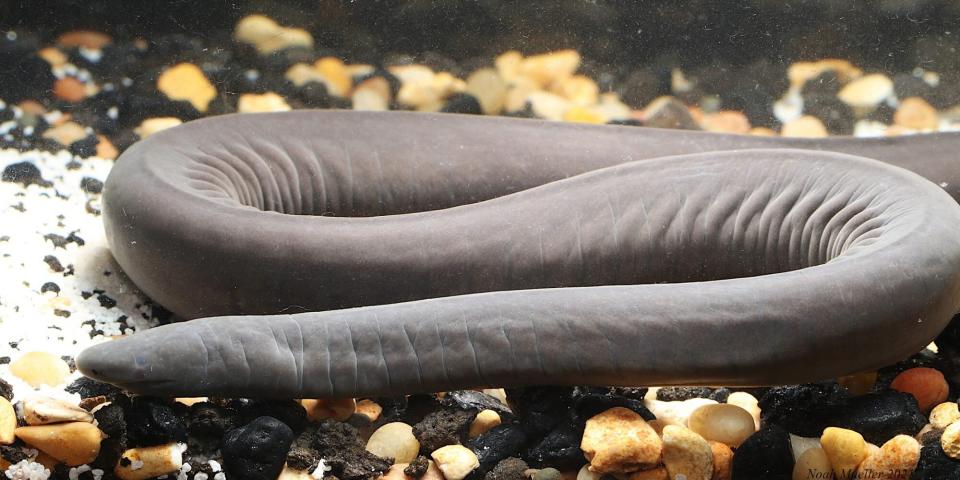"Noodle-Like" Amphibians That Can Grow Up to 5 Feet Long Discovered in Florida Canal
Another day, another weird creature to haunt our dreams. This time, in Florida.
Texas, the Sunshine State sees your hammerhead flatworms and raises you limbless amphibians that can grow up to five feet long.
Florida Fish and Wildlife biologists reportedly captured a caecilian in the Tamiami Canal in Miami, the first discovery of its kind seen in the United States.
Not to be confused with shrimp eels, Caecilians (pronounced "Sicilians") are aquatic, limbless, noodle-like animals that have roamed the Earth since before the dinosaurs. The species that was found in Miami is a Rio Cauca caecilian, which are native to Colombia and Venezuela.
Described as "reclusive," this obscure group of animals spends most of their lives burrowed underground and are known for their extremely poor eyesight. They can range in size from a few inches to five feet long, depending on the species, and are found in southern Mexico, as well as parts of Africa and Southeast Asia.
In a news release, Florida Museum of Natural History scientists said it's too early to predict the creature's potential impact on the local ecosystem.
"Very little is known about these animals in the wild, but there's nothing particularly dangerous about them, and they don't appear to be serious predators," Coleman Sheehy, Florida Museum's herpetology collection manager, said in a statement. "They'll probably eat small animals and get eaten by larger ones. This could be just another non-native species in the South Florida mix."
Sheehy said that finding on in the Miami area was a shocker.
"This was not on my radar," he said. "I didn't think we'd one day find a caecilian in Florida. So, this was a huge surprise."

Courtesy of Noah Mueller/Florida Museum of Natural History
Because this species is generally kept in indoor aquariums, Sheehy believes they arrived in the canal after one or more was discarded by an irresponsible pet owner. He is currently investigating several other reports of caecilians in the canal.
"This may be an environment where this species can thrive," he noted.
Well then... welcome to Miami!

